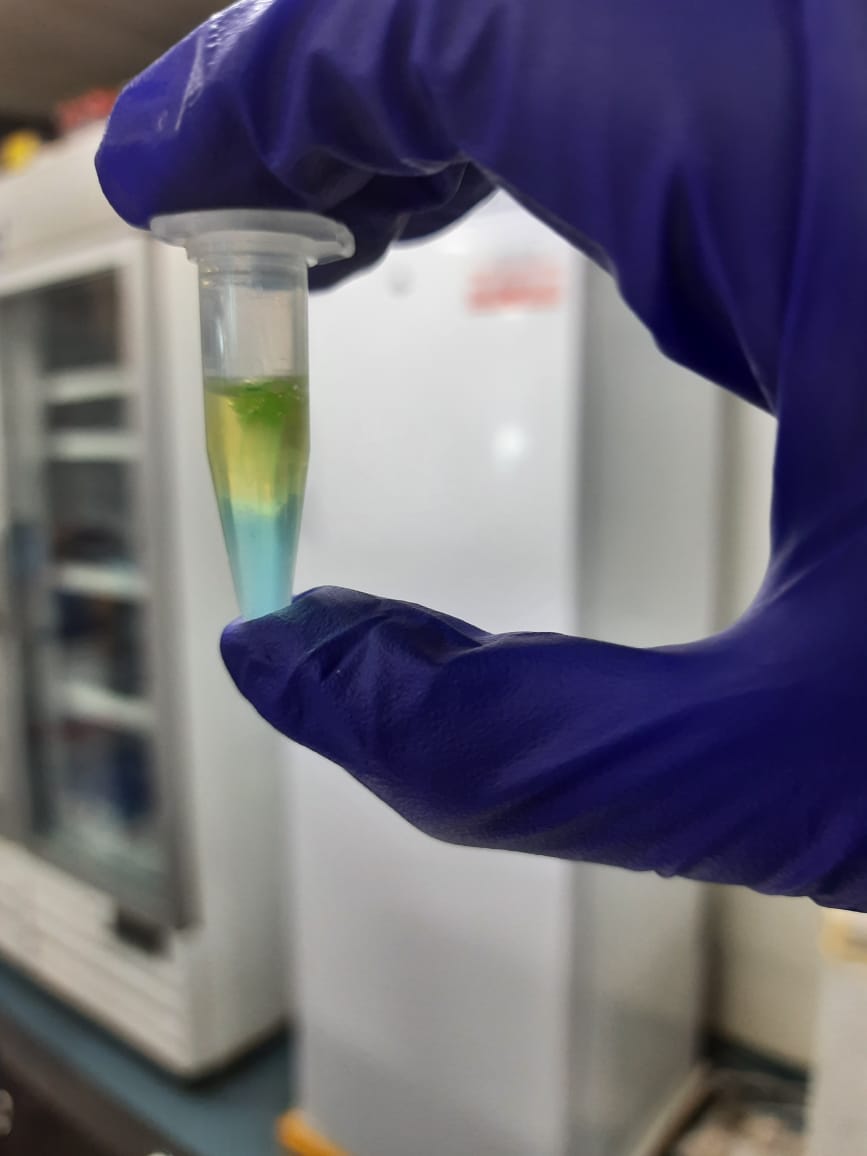Research Spotlight
Story of phosphorylation and inflammation in PD
Neuroinflammation usually accompanies neurodegeneration. Inflammatory processes are known to be initiated by eicosanoids. Phospholipase A2 generates eicosanoids by breaking down membrane lipids.
High levels of CdK5 kinase have been shown to be present in the brains of people with Alzheimer’s Disease and Parkinson’s Disease, but its mechanism of action is largely unknown. Binukumar BK’s lab pieced together PLA2 (mediated inflammation), cytosolic PLA2, with the kinase activity of Cdk5. Using a combination of animal studies, primary and secondary cell culture along with molecular dynamics and analysis of publicly available PD brain transcriptomic data sets, they show that Cdk5 phosphorylates yet not shown threonine site in addition to the well established serine phosphorylation. The phosphorylation further enhances the activity of cytosolic PLA2 (cPLA2) that would lead to generation of initiator molecules of inflammatory signaling like arachidonic acid. Thus, intervention at the level of inflammatory regulators, by targeting Cdk5 and cPLA2, is a promising therapeutic for PD (and AD).
Article: Cyclin-Dependent Kinase 5 Regulates cPLA2 Activity and Neuroinflammation in Parkinson’s Disease. Paul S, Fatihi S, Sharma S, Kutum R, Fields R, Pant HC, Thukral L, Binukumar Bk. eNeuro. 2022 Nov 23;9(6):ENEURO.0180-22.2022.
https://pubmed.ncbi.nlm.nih.gov/36351818/
Targeting tumors and microbes with peptides
Recently, cell-specific targeting of non-viral gene delivery systems to achieve high therapeutic efficacy with minimal adverse effects, have attracted the attention of the researchers. Several targeting moieties, such as peptide ligands, antibodies, aptamers, etc., have been incorporated into synthetic non-viral gene delivery vectors to fulfill the requirement of active targeting.
Arginylglycylaspartic acid (RGD) motif is the minimal sequence required for a peptide to bind to integrins (that are present on the cell surface) and thereby to the cells. It has been widely used for drug delivery, gene delivery and tissue engineering. The RGD peptide based gene delivery approaches employ a non-viral vector or a nanoparticle, but are limited by the stability of the RGD peptide. In this article, Pradeep Kumar’s group has shown to use a synthetic RGD peptide conjugated with polyethylenimine, which showed robust binding and high stability, for gene delivery.
Besides, these also exerted significant antimicrobial effects against drug-resistant pathogens. Altogether, the nanosized non-naturally modified RGD peptide mimic-based gene vectors hold great potential as efficient biomaterials for targeted gene delivery and antimicrobial applications. (With inputs from Diksha Jha)
Article: Cationic RGD peptidomimetic nanoconjugates as effective tumor targeting gene delivery vectors with antimicrobial potential. Ahmadi Z, Jha D, Kumar Gautam H, Kumar P, Kumar Sharma A.Bioorg Chem. 2022 Dec;129:106197.
https://pubmed.ncbi.nlm.nih.gov/36260955/
Harnessing TLR-5 activation for allergen immunotherapy
Allergic diseases are increasing at an alarming rate worldwide. Treatment regimens for the management of allergic symptoms include corticosteroids and beta agonists but are associated with symptomatic relief and also several side effects. Allergy is IgE mediated immune response and symptoms occur through cross linking of allergen with IgE on effector cells. Allergen immunotherapy with peptides lacking three dimensional structure to cross link IgE serves as a promising alternative for remission of allergic parameters. Although efficacious, short synthetic peptides have low immunogenicity for induction of immune response.
Naveen Arora’s lab was first to establish the immunomodulatory role of TLR-5 conjugation with peptides to explore its potential in allergy therapeutics. This study used a combination of biochemical, physiochemical and immunological assays to establish that flagellin conjugated to the T-cell epitopes of an allergen (Per a 10 which is present in cockroach) could generate a Th1/Treg response that is shown to be necessary for the success of immunotherapy.
This study highlights the potential of flagellin conjugates for allergen immunotherapy and it needs to be explored in future studies. (With inputs from Richa Mishra)
Article: TLR-5 ligand conjugated with Per a 10 and T cell peptides potentiates Treg/Th1 response through PI3K/mTOR axis. Mishra R, Sharma S, Arora N. Int Immunopharmacol. 2022 Nov 1;113(Pt A):109389.
https://pubmed.ncbi.nlm.nih.gov/36332450/
Prediction of phosphodiesterase activity using AlphaFold
Cyclic-di-GMP is one of the signaling molecules that can contribute to antibiotic resistance in Mycobacterium. It is known to facilitate growth of mycobacterium under stressful conditions. A phosphodiesterase would help in maintaining the cyclic-di-GMP levels by terminating the signal, but it has not been identified yet.
To better understand the activity of mycobacterial oligoribonuclease and the homeostasis of cyclic-di-GMP, the most likely phosphodiesterase was identified through AlphaFold-empowered structural homology. Bhupesh Taneja’s lab explored the phosphodiesterase activity of oligoribonuclease on pGpG substrate. Deletion mutants of M. segmantis lacking oligoribonuclease were further used to establish its role in growth of M. segmantis.
Article: Structural investigation and gene deletion studies of mycobacterial oligoribonuclease reveal modulation of c-di-GMP-mediated phenotypes. Badhwar P, Ahmad I, Sharma R, Taneja B. Int J Biol Macromol. 2022 Nov 8;223(Pt A):161-172.
https://pubmed.ncbi.nlm.nih.gov/36356862/

